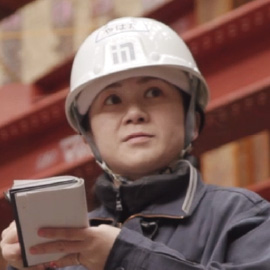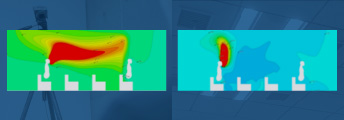Researcher’s Interview
Understanding
human movement
Power assist suit for
the construction industry
(Japanese Version)

Advanced Technology Incubation and
Mechatronics Group
Development of a power assist suit for the construction industry through feedback and work analysis
While mechanization, automation, and robotics continue to advance, the construction industry remains labor-intensive, with most tasks still performed by hand, except for large cranes and heavy machinery. Moving and installing heavy objects manually is still common. As a result, it is said that 60% of occupational diseases among construction workers are related to back pain. To assist workers who are already suffering from such conditions and to protect the next generation of younger workers, we began the development of a power assist suit for the construction industry.
In the development process, we started by researching assist suits already available in the market, particularly those designed for the healthcare and logistics industries. These suits mainly focused on repetitive tasks involving lifting at a single point, which did not fit the diverse working positions in construction. We therefore sought a suit that would not hinder the body’s movements, regardless of the work posture. This led us to explore agricultural assist suits. After showing the reality of how market-ready assist suits were unsuitable for construction sites to the manufacturers, we collaborated on finding solutions to the challenges and developed a prototype. Following its completion, we conducted field trials and gathered feedback from workers, making detailed adjustments to suit the specific movements required. The result is the current version.
Construction work is often described with the "3 Ds" (dirty, dangerous, and demanding), but I believe creating a comfortable working environment will be crucial in the future. Along with technological developments aimed at improving productivity, I think a key goal should be the development of technologies that make "future worksites human-friendly." The power assist suit can reduce the strain on the back during tasks such as lifting or lowering heavy objects or working in a half-bent posture, and I expect it to contribute to the reform of working styles on future worksites.

Maintaining a semi-crouched posture helps reduce strain on the lower back.

Despite its slim design that does not hinder use at construction sites, it has the power to reduce strain on the lower back when lifting heavy objects.

The motor’s movements are monitored to program optimal motions.

The most important input comes from the workers themselves; incorporating their feedback ensures the creation of better, more practical solutions for the field.


